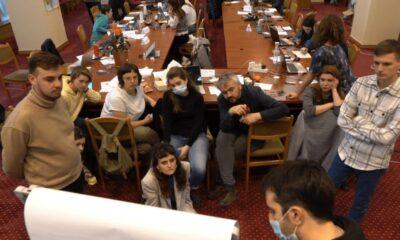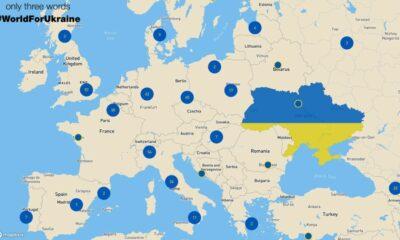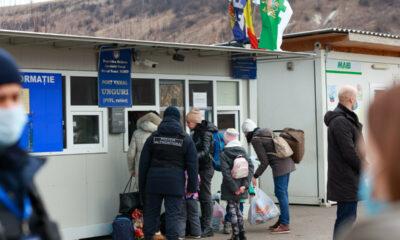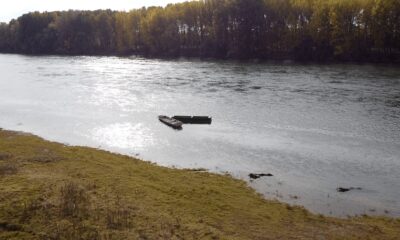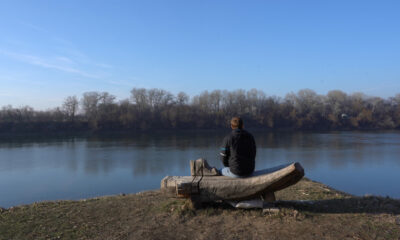Economy
Analysis: Russia launches massive program to develop Black Sea ports
Reading Time: 3 minutesOn July 11 Russia’s First Deputy Prime Minister Sergei Ivanov and Transport Minister Igor Levitin unveiled a comprehensive modernization program for Russian Black Sea ports during an inspection visit
Autor: Vladimir Socor, Eurasia Daily Monitor
On July 11 Russia’s First Deputy Prime Minister Sergei Ivanov and Transport Minister Igor Levitin unveiled a comprehensive modernization program for Russian Black Sea ports during an inspection visit there. The program is ambitious in both scale and pace, with most of its goals scheduled to be attained by 2010. It is a counterpart to the program for accelerated expansion of Russia’s Baltic ports, which the Russian government also launched this year, with President Vladimir Putin taking a personal interest in both programs.
The government drew up its Black Sea program before the decision of the International Olympic Committee to hold the 2014 Winter Olympic Games in Sochi, on Russia’s Black Sea coast. That decision, announced on July 4, will necessitate massive investments to develop infrastructure in the Sochi area, above and beyond the scope of the overall program for Black Sea ports and mostly beyond this program’s time frame. Ivanov and Levitin discussed both the overall maritime transport program and ideas about Sochi development during their visit.
According to these officials, Russian Black Sea ports currently handle more than one third of Russia’s sea-borne exports in terms of tonnage. Total export cargos were reported at 160 million tons in 2006 and are “conservatively” expected to grow to 250 million tons annually by 2010. The port development program ambitiously envisages doubling the existing export capacities, which are currently strained to the limit and distributed very unevenly along the Russian coast.
At present, Novorossiysk alone handles more than one half of that overall export tonnage. The over-congested port’s various terminals loaded a reported 88 million tons of export cargos in 2006.
That figure includes an estimated 60 million tons of oil, one half of this originating in Kazakhstan. Oil loading will increase if the Caspian Pipeline Consortium’s line boosts the volume of oil pumped from Kazakhstan to Novorossiysk. Expecting this to be the case, the Russian government is ordering three tanker ships to carry that additional volume of oil from Novorossiysk to Bulgaria’s Black Sea port of Burgas, for feeding into the planned trans-Balkan pipeline to Alexandropolis on the Greek Aegean coast.
The Russian government’s program envisages relieving some of the congestion at Novorossiysk through specialization. It would transfer some shipping flows from there to other Russian Black Sea ports while dedicating Novorossiysk to oil, grain, and container cargos. In addition, a modern grain export terminal is due for completion this year.
Ivanov and Levitin explicitly called for competing with Romania’s port of Constanta in terms of attracting international container shipping to Novorossiysk. The Russian government envisages building the appropriate terminals as a priority until 2010, in place of existing old terminals.
The commercial port of Novorossiysk can no longer expand physically in the narrow bay, a section of which is taken up by the naval port. Russia’s Black Sea Fleet is expanding its installations there to a full-fledged base as an alternative to Ukraine’s Sevastopol, where the Russian fleet’s lease is due to expire in 2017.
Other port development plans include using Taman as the main coal export terminal (instead of Tuapse) while expanding the use of Tuapse as an export outlet for oil and, potentially, liquefied gas. The port of Kavkaz (also in Krasnodar Krai) is slated to specialize for handling commodity ferryboats. A catamaran line for passenger boats is scheduled to run between the ports of Anapa-Novorossiysk-Gelenjik-Tuapse-Sochi.
The program also envisages developing overland and air links to the ports. A second railroad line to Novorossiysk and convergent highways to that port are to be built until 2010. Also by that date, the old airports of Anapa and Gelenjik are to become modern international airports, alongside the existing Adler airport. The three are to be merged into a single, state-controlled company. Ivanov and Levitin underscored Krasnodar Krai’s potential as a destination for international and Russian tourism (“We don’t have anything comparable in Russia”).
In Sochi, the transport modernization program runs through 2015, but will almost certainly have to be adjusted to meet the 2014 Olympic deadline. The port will be reserved exclusively for passenger traffic. All other cargo flows are to be transferred from Sochi to other ports. This measure takes immediate effect, so as to enable the port of Sochi to receive construction materials for the planned Olympic installations and start construction of large-scale passenger terminals. These are planned to accommodate passenger and cruise ships with capacities of up to 3,000 passengers each, for a total of 600,000 passengers per year by 2010 and 715,000 by 2015. Access highways to Sochi and a ring highway around the city are included in the program, as well as expansion of the Adler airport, which is servicing Sochi.
The Russian government is creating an inter-departmental structure to supervise this Black Sea program. While the government’s existing Maritime Affairs Board only meets three or four times per year with a very broad agenda, the new structure will be a standing one to coordinate port development. Ivanov has nominated Levitin to head the new inter-departmental structure in his capacity as transport minister. With President Putin evidencing a personal interest in the port development program, Ivanov a front-running presidential contender, Levitin also mentioned as aspiring to a top post in 2008, and the scheduled Olympic games as an added stimulus, this Russian Black Sea program will command political attention and funding in Moscow.
Economy
Moldova will receive a disbursement of 36 million euros as part of the the Economic Recovery Plan
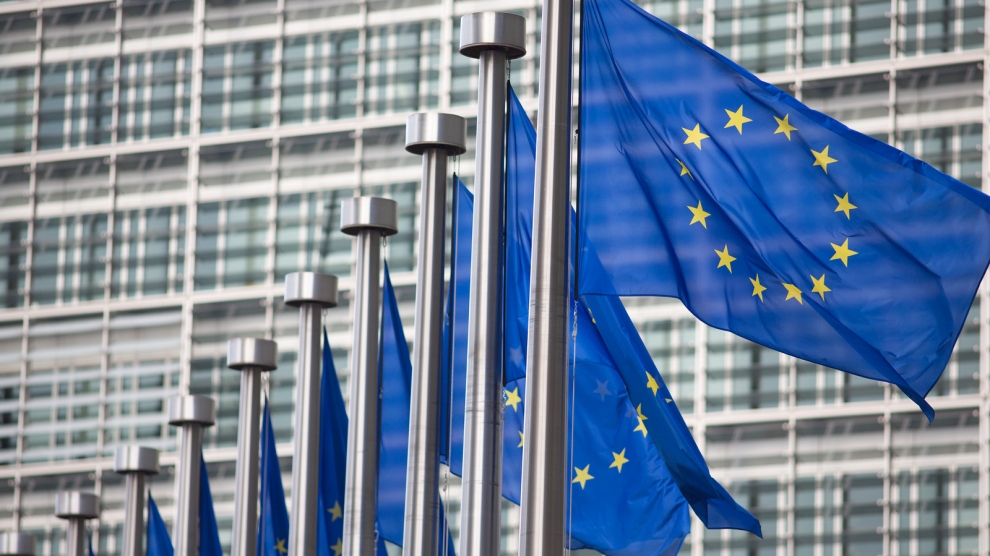
This week, the European Commission approved the disbursement of 36 million euros in grant money for the Republic of Moldova. The announcement was made by Deputy Director-General for Neighbourhood Policy and Enlargement Negotiations at the European Commission, Katarina Mathernova, who paid an official visit to the Republic of Moldova between September 13-15, together with Managing Director for Russia, Eastern Partnership, Central Asia, Regional cooperation and OSCE, at the European External Action Service, Michael Siebert.
The EU officials had meetings with President Maia Sandu, Minister of Foreign Affairs and European Integration, Nicu Popescu, Speaker of Parliament, Igor Grosu, Prime Minister of the country, Natalia Gavrilita, as well as key representatives of Government, international financial institutions and the civil society, according to a press release issued by the Delegation of the European Union to the Republic of Moldova.
Beside such topics as the EU-Moldova relations and prospects, the priorities of the reform agenda of the new Moldovan Government, preparations for the Eastern Partnership Summit at the end of the year and the Transnistrian conflict settlement, the officials also discussed the EU assistance in support of reforms and the Economic Recovery Plan for Moldova, which was announced in June with a total EU support of 600 million euros over the next 3 years.
“The first measures under the Economic Recovery Plan will shortly materialize, with the expected disbursement of 36 million euros in grant money under budget support programmes to support the authorities’ efforts to fight against the consequences of the pandemic. Moldova can count on EU’s assistance on its path to reforms and to recovery, bringing tangible results to citizens,” Katarina Mathernova stated.
The plan is based on assistance provided by the European Union through various bilateral and regional instruments, aiming to mobilize the funds in the form of grants, loans, guarantees and macro-financial assistance.
“The Economic Recovery Plan for the Republic of Moldova involves much more, not just this financial support provided immediately. It must help digital transformation, strengthen infrastructure, energy efficiency, education and support small and medium-sized enterprises,” the EU official also said.
As Prime Minister Natalia Gavrilita informed, “The Economic Recovery Plan and the 5 flagship initiatives for Moldova in the Eastern Partnership will directly contribute to the reform and consolidation of institutions, stimulate long-term socio-economic development, bring direct benefits to citizens, and unleash new economic opportunities through promoting the green agenda and digitization. Small and medium-sized enterprises (SMEs) have been hit hard by the crisis. Promoting and diversifying access to finance and reducing collateral requirements will be essential in supporting economic operators. We are grateful to the EU partners who will launch two programs to support 50 000 independent Moldovan SMEs to adapt to the new conditions.”
President of the Republic of Moldova, Maia Sandu, welcomed the decision of the European Union to disburse about 745 million lei in grant money, as the official page of the President’s Office announced. “EU support comes after a long period of freezing of European assistance, caused by former governments. We managed to relaunch the political dialogue with the European Union and resume financial assistance. The Republic of Moldova is gradually regaining the trust of its strategic partners. This European support is also a signal of encouragement for the new Government team in its commitment to clean up the institutions, fight corruption and launch development programs in the country,” said Maia Sandu.
Photo: unknown
Economy
Romania and Moldova signed a partnership memorandum pledging to cooperate in promoting their wines
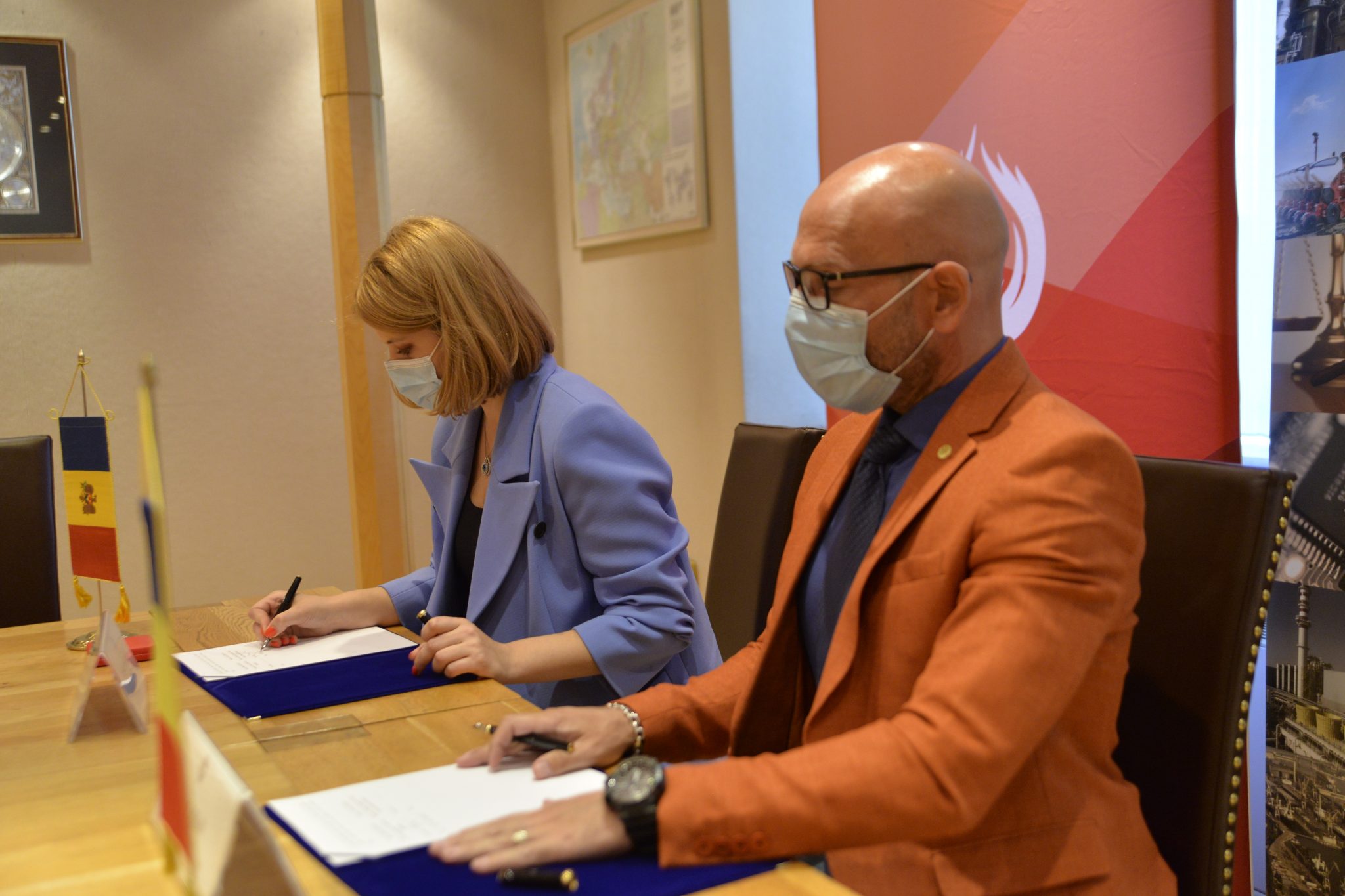
The Chamber of Commerce and Industry of Romania (CCIR) and the National Office for Vine and Wine (NOVW) of the Republic of Moldova signed, last week, a memorandum of cooperation on organizing joint promotional activities in the markets of common interest, as the CCIR announced.
China, Japan or the USA are just some of the markets targeted by the Romanian and Moldovan institutions. The memorandum also involves advertising activities for wines from common indigenous varieties, promoting the oeno-tourist region, developing a tourist route in the two states, exchange of experience, study visits, and mutual support in identifying new export opportunities. “We are very confident that this collaboration between our organizations will lead to sustainable economic growth and a higher degree of well-being among Moldovans and Romanians,” claimed Deputy Secretary-General of CCIR, Bogdan Visan.
On the other hand, Director of the NOVW, Cristina Frolov, declared that no open competition with Romania is aimed at the governmental level of the Republic of Moldova. “This request for collaboration is a consequence of the partnership principle. Romania imports 10-12% of the wine it consumes, and we want to take more from this import quota. Every year, the Romanian market grows by approximately 2.8%, as it happened in 2020, and we are interested in taking a maximum share of this percentage of imported wines without entering into direct competition with the Romanian producer,” the Moldovan official said. She also mentioned that Moldova aims at increasing the market share of wine production by at least 50% compared to 2020, and the number of producers present on the Romanian market – by at least 40%.
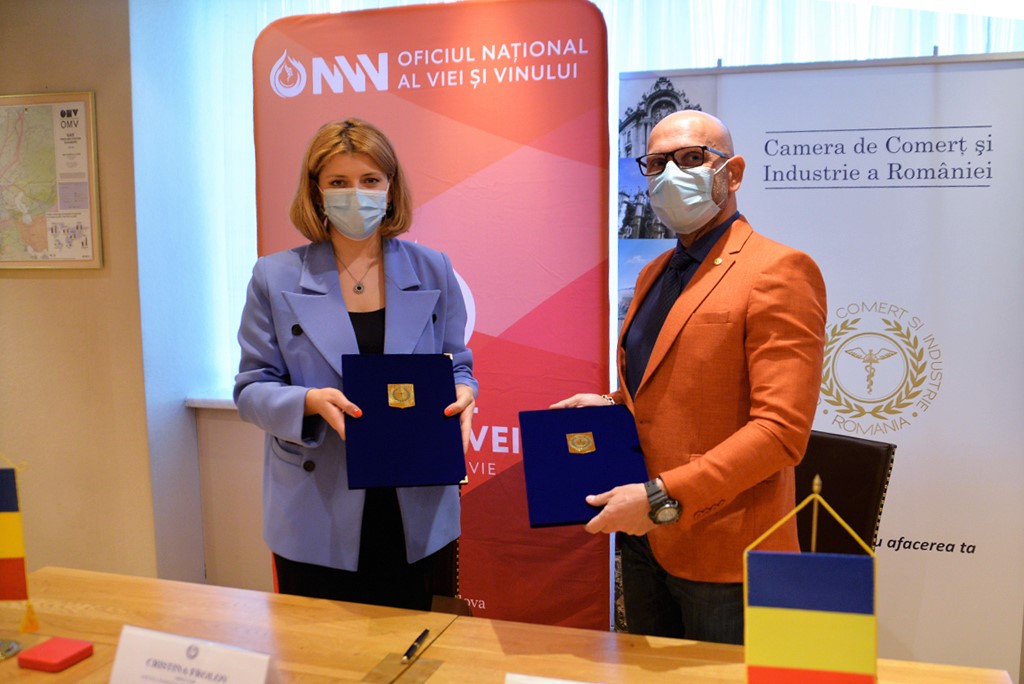
Source: ccir.ro
**
According to the data of the Romanian National Trade Register Office, the total value of Romania-Moldova trade was 1.7 billion euros at the end of last year and over 805 million euros at the end of May 2021. In July 2021, there were 6 522 companies from the Republic of Moldova in Romania, with a total capital value of 45.9 million euros.
The data of Moldova’s National Office of Vine and Wine showed that, in the first 7 months of 2021, the total quantity of bottled wine was about 27 million litres (registering an increase of 10% as compared to the same period last year), with a value of more than one billion lei, which is 32% more than the same period last year. Moldovan wines were awarded 956 medals at 32 international competitions in 2020.
Photo: ccir.ro
Economy
Moldova’s hope to be a top walnut exporter and its main difficulties
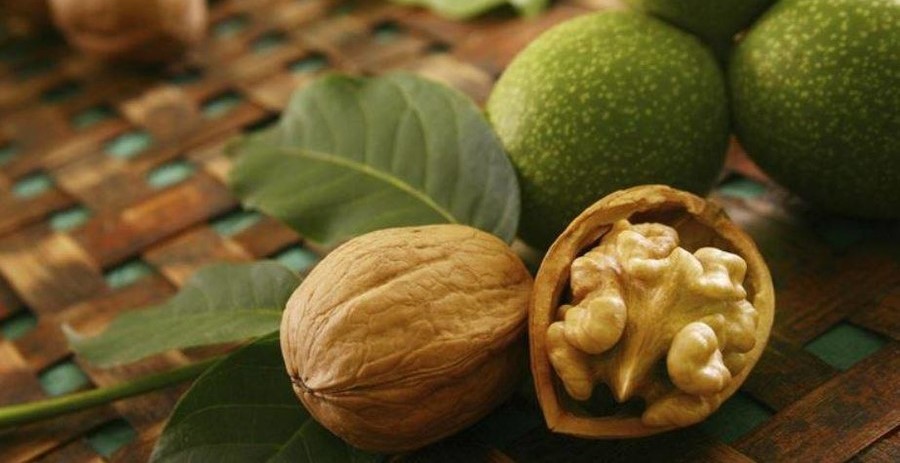
The Republic of Moldova has perfect weather conditions for growing walnut trees, that creating a great potential of walnut production and trade, especially on international markets, where the demand is way higher than the product’s supply. National and international experts believe that the country’s walnut production industry is on the verge of important transformations, which could lead to increased yields, quality and competitiveness worldwide.
According to authorities, Moldova exports 34-35 thousand tons of walnuts in shell, which is about 7% of the total export of fruit and 5% of the total export of horticultural products. The export value is assessed as being $120 million, that being 57-60% of the total fruit export value and about 50% of horticultural export value. Most of walnut crops are exported to the EU countries, such as France, Germany, the Netherlands, Romania and Austria. The country’s exports were among the world’s top 10 when it comes to the highest dollar value of the product during 2020.
Viorel Gherciu, Minister of Agriculture and Food Industry, pointed out that the production in the domestic walnut industry has increased by 55% in the last five years, which ranks Moldova among the main producers in the world.
“The biggest opportunity for this industry is that we are in the geographical proximity of the largest walnut import area in the world, which is the European Union, with almost 40% of total imports in the world. We are on the EU border, with privileged relations, with an Association Agreement. We already enjoy a good relationship in working with European importers, they trust our processors. A very close collaboration has been created and this is, in fact, the guarantee for those who invest in the area,” claimed the president of the Walnut Producers Association, Oleg Tirsina.
The data provided by the National Bureau of Statistics show that there are 34.7 thousand hectares of walnut plantations in the country. 20.90 hectares are represented by orchards. 75% of planted orchards are formed of old varieties trees. 30-35% of the exported production comes from orchards, the rest comes from individual farmers and plantations along the roads. This means that the quality of walnut production is not at its maximum potential. Developing commercial plantations through orchards modernization and extension of walnut varieties would provide double yield and better quality, experts say.
Governmental support in the form of subsidizing solutions, foreign investments and credit options are indispensable for the industry development. One of the financing options is the credit line of the European Investment Bank Project. Since 2016, 15 producers and processors of nuts, almonds and hazelnuts have benefited from these loans with the total amount of investments worth 8.7 million euros. A further extension of the project would provide another 60 million euros for the modernization of the horticultural sector in general and for harvesting organic walnuts in particular.
Photo: heymoldova.com


